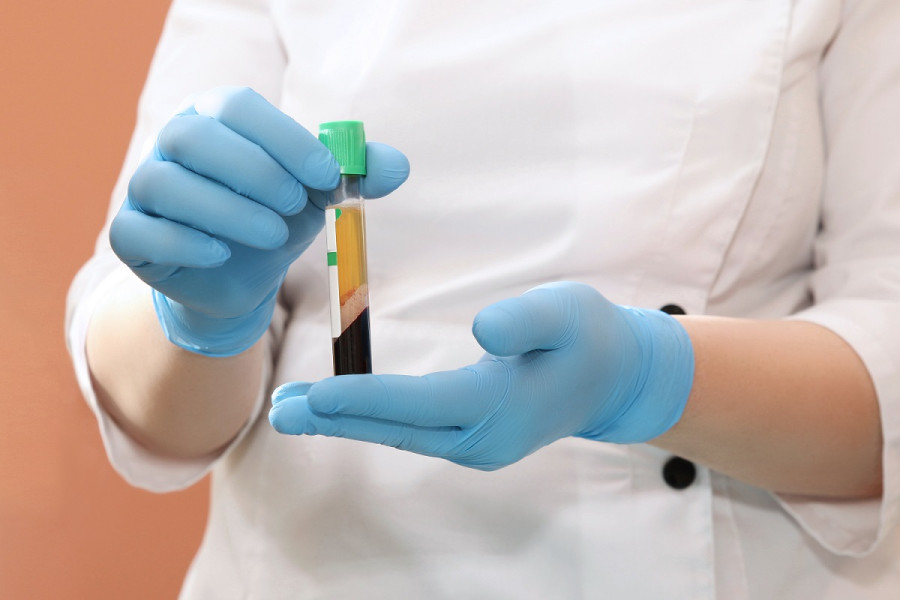Health
What is convalescent plasma therapy, how it works and does it work for Covid-19
Medical experts across the world are experimenting with the therapy in moderate to critical Covid-19 patients. There has been some success, but they are yet to conclusively call it a proven and effective treatment.
Post Report
Media reports in Nepal suggesting plasma therapy as a new ray of hope in the fight against Covid-19 has put a spotlight on a medical procedure that doctors have used, for about a century, to treat novel diseases. The Covid-19 pandemic has brought the world to its knees and the medical fraternity is on a race to find treatment and a vaccine against Covid-19, caused by Sars-CoV-2. Nepal so far has reported over 20,000 Covid-19 cases and 57 deaths. The recent surge in the number of Covid-19 cases, especially after the lifting of the four-month-long lockdown on July 21, has made people wary of a disaster, with public health experts constantly calling for expanding tracing, testing and treatment. Amid this, reports have suggested ‘first successful Covid-19 plasma therapy’ in Nepal.
Here is what you need to know about plasma therapy.
What is plasma therapy?
Convalescent plasma (pronounced: kon-vuh-LES-unt PLAZ-muh) therapy is what doctors actually call it. It is a term doctors use to describe plasma that is removed from the blood of a person who has recovered from a disease. It is then transfused into a person with the disease. Since plasma is extracted from the blood of the people who have recovered, or convalesced, from a virus, it is called “convalescent plasma”.
But what is plasma?
Plasma is the liquid part of blood. When all red and white blood cells and platelets are removed from blood, what remains is just the liquid and it is called plasma.
Composition-wise, 45 percent of blood are red blood cells, white blood cells and platelets. The rest is plasma, which is light yellow in colour and is made up of 90 percent of water.
About a hundred years ago Emil von Behring was awarded the first Nobel prize for physiology and medicine for his work demonstrating that plasma could be used to treat diphtheria.
Why is everyone talking about convalescent plasma therapy?
Doctors and scientists across the globe are scrambling to find a vaccine or treatment for Covid-19. There is currently no drug available for the treatment of the disease. The Food and Drug Administration of the United States hasn't approved any drugs to treat people with Covid-19. Of the many options that are currently under trial, doctors are also exploring convalescent plasma therapy as a treatment for Covid-19 patients. In Nepal, media reports have suggested that doctors have “successfully treated” a Covid-19 patient through convalescent plasma therapy.
Here’s how it works
When a human body is exposed to a foreign pathogen, it produces antibodies in response. Antibodies are proteins that the body uses to fight off infections. These antibodies are contained in the plasma. Once an individual has recovered from a virus, the antibodies continue to remain in the plasma for a certain period, prepared to fight the virus if it returns. Antibodies of one individual, however, can be employed to fight the virus for other people. Doctors hence extract convalescent plasma from a recovered individual and transfuse into another person battling with the virus. This means, the person with the virus will have antibodies in the immune system long before it produces its own response to the virus.
But here’s a caveat
Doctors have just started to explore this therapy as an option. When it comes to Covid-19, they actually are not sure if one person’s antibodies–the soldiers that fight the virus–can also fight for other people.
Has this therapy been tried before?
Yes. This has been tried when no other treatment options were available, and studies have suggested that it can help improve the condition of patients suffering from various diseases, including H1N1 and SARS. Most recently, it was tried for Ebola. The therapy relies on the concept of “passive immunity”. When an individual develops his or her own antibodies, for example through a vaccine, it is called “active immunity”, but when the person “borrows” them from another person via convalescent plasma, it is called passive.
Now comes the most important question–does it work for Covid-19?
First, let’s recap how it works: convalescent plasma is taken from a person who has recovered from Covid-19. This plasma contains the antibodies. The convalescent plasma therapy means these antibodies now will be transfused into another person battling Covid-19. Now here’s the catch. Since this coronavirus is novel–meaning no one had been exposed to it before the current outbreak– our bodies don’t already have the antibodies needed to fight it. According to The Washington Post, a large study of hospitalised Covid-19 patients who received transfusions of blood plasma from people who recovered found the treatment was safe and suggests giving it to people early in the disease may be beneficial. Doctors around the world are experimenting with convalescent plasma therapy in moderate to critical Covid-19 patients. Some success has been reported, but the medical community is yet to say conclusively that it is an effective treatment for Covid-19. Countries like the United States, the United Kingdom and even neighbouring India, have said convalescent plasma therapy is being trialled.




 13.12°C Kathmandu
13.12°C Kathmandu













